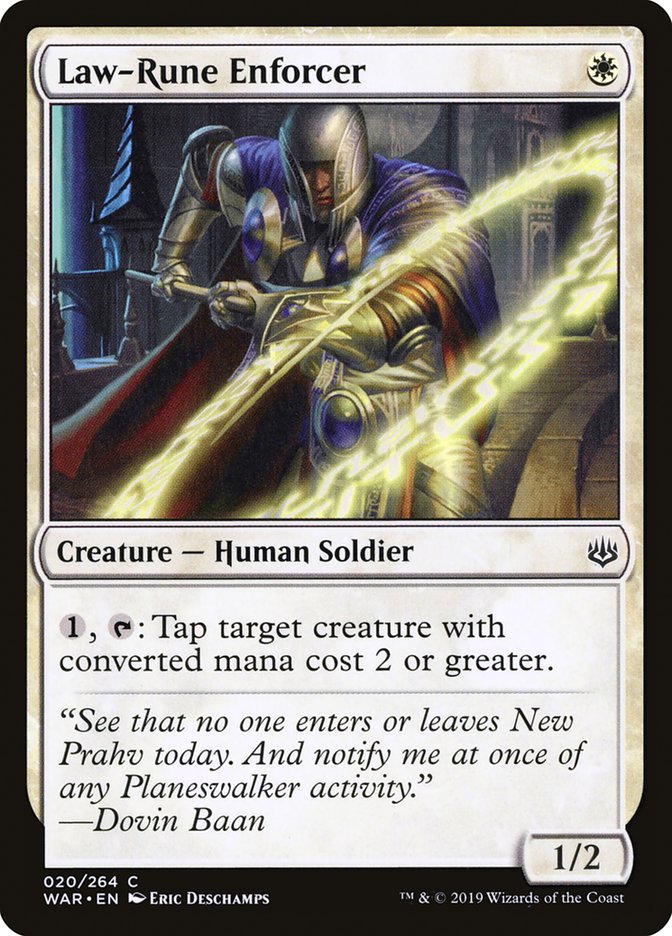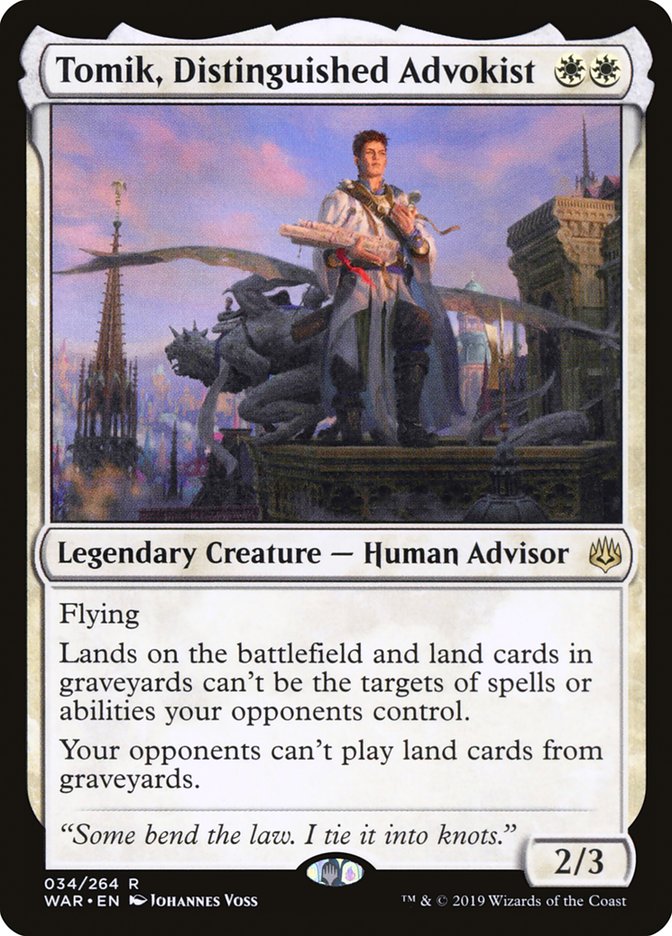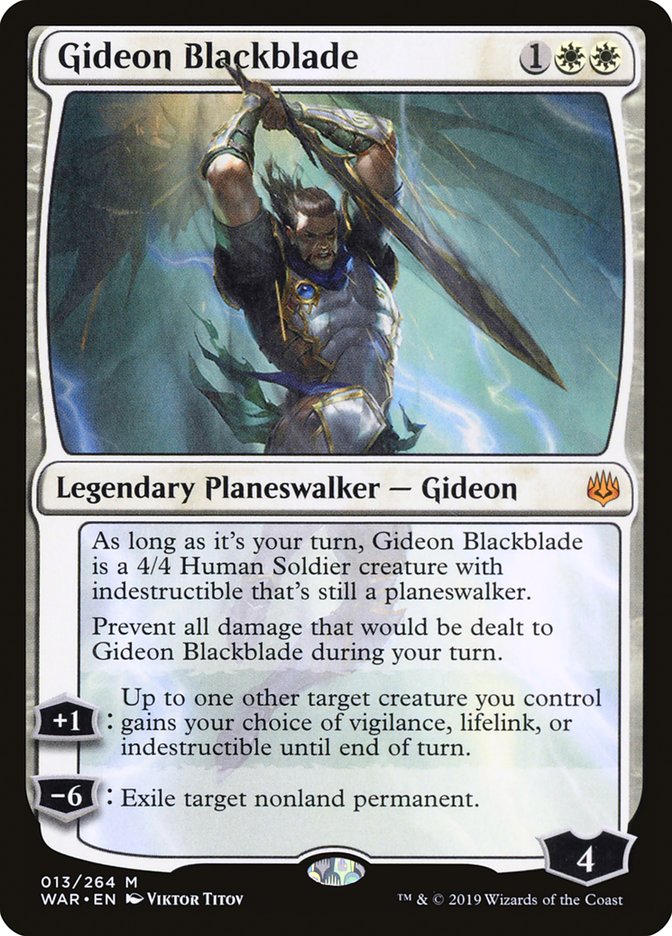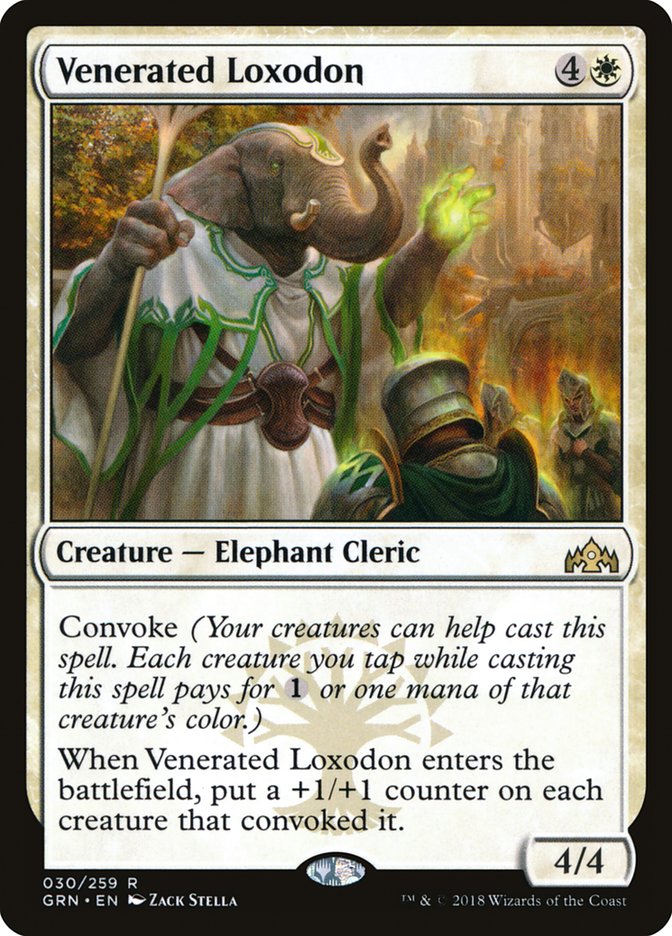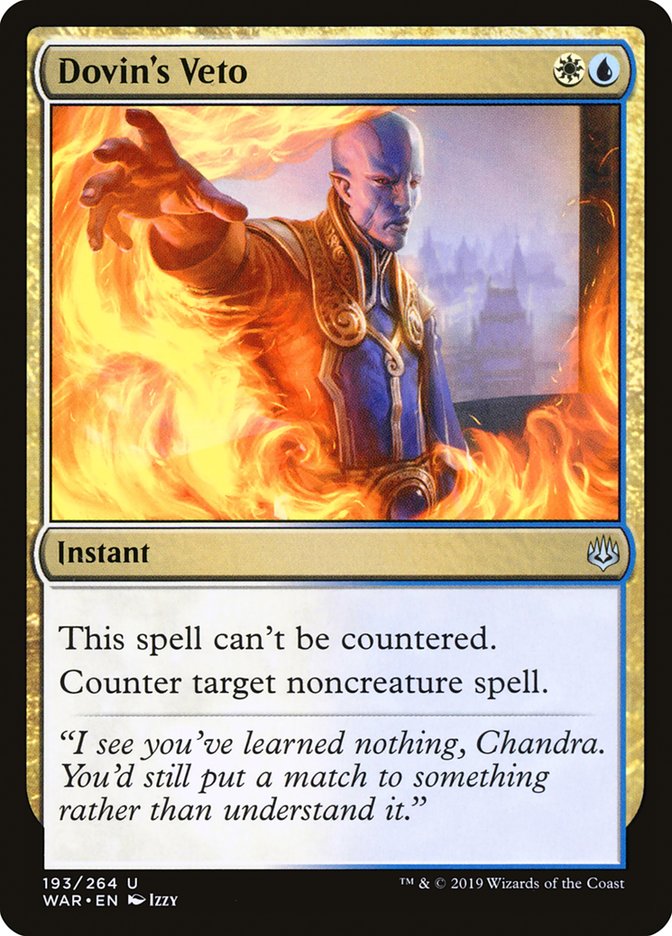With the release of War of the Spark, Standard has dramatically shifted. Gone are the days of endless Sultai Midrange players, and with them the hordes of Mono-Blue Aggro players. Standard is now defined by three decks: Mono-Red Aggro, Esper Control, and Simic Nexus. In the midst of all this, Azorius Aggro remains, waiting for its chance to return to the spotlight.
While it certainly wasn’t the winningest deck at SCG Richmond last weekend, it was not totally gone either. Azorius boasts a strong Simic Nexus matchup and is close against both Esper Control and Mono-Red Aggro. The challenge facing the deck is this: How can it adapt to the new metagame, and which War of the Spark cards will help counter Esper Control and Mono-Red? Today, I will examine every reasonable new option to once again create a flawless white list.
Law-Rune Enforcer
Azorius Aggro is defined by its one-drops. Without a critical mass of playable ones, the archetype would not exist. Law-Rune Enforcer provides the ability to interact with larger blockers and set up an alpha strike with the “end-step tap, my turn tap again” sequence. Additionally, it has the critical second point of toughness. That means that the newest Master Decoy variant is good versus both the first-striking body and the triggered ability of Standard’s most feared Goblin, Goblin Chainwhirler. With a little help from Venerated Loxodon or Benalish Marshal, Law-Rune Enforcer can also survive Cry of the Carnarium.
Historically speaking, the last two one-drop slots in Azorius Aggro were filled with stuff like Healer’s Hawk, Rustwing Falcon, and Hunted Witness. I think it is undeniable that Law-Rune Enforcer will assume this slot. The tougher question is whether copies three and four will make the cut. Dauntless Bodyguard and Skymarcher Aspirant are untouchable on account of their second power, and so Law-Rune Enforcer is competing against Snubhorn Sentry. Snubhorn is the worst it has ever been right now and I suspect I would register zero if I were to play Azorius Aggro tomorrow. It has never been very impressive against Esper Control or Simic Nexus, and while it can sometimes shine against Mono-Red, Enforcer’s ability to tap Runaway Steam-Kin and Goblin Chainwhirler is more important.
Verdict: Play four.
Tomik, Distinguished Advokist
Before War of the Spark released, the two-drop slot in Azorius had only two real options: Adanto Vanguard and Tithe Taker. Throughout the season, the hive mind could be found playing four Tithe Takers, four Adanto Vanguards, or various splits, sometimes totaling more than four two-drops. Tomik throws a new option into that mix. In the old format, the flying body would have made him attractive against both Sultai and Mono-Blue. In the new format, his primary attribute is his three toughness. This lets him shrug off Cry of the Carnarium, Shock, Goblin Chainwhirler, and Moment of Craving.
However, he’s still vulnerable to any of Mono-Red’s assorted Lightning Strike variants and to Oath of Kaya, which I expect to grow in popularity. Overall, I think the fact that he’s the best two-drop against Goblin Chainwhirler makes it hard to argue against at least one copy of Tomik, but I doubt he’s enough better that I’d ever want to risk even a small chance of drawing two.
Verdict: Play exactly one.
Gideon Blackblade
When I first read Gideon Blackblade, I was blown away. I thought this card would change everything, creating a resilient threat and protecting your best creature from Kaya’s Wrath each turn. Then, I read the card again. Gideon’s keyword-granting lasts only on your turn. That means the card is, for the most part, a three-mana 4/4 that lives through Kaya’s Wrath. While the keyword-granting and exiling do come up, they are counterbalanced by Gideon’s tendency to die in combat when you’re behind.
These days, a three-mana 4/4 is not an incredible card. But Azorius Aggro has always been short a few three-drops and Gideon might be the right card for those slots. In the last format, I typically played two copies of Unbreakable Formation, but others played as few as zero copies and even I frequently sideboarded them out. There’s a chance Gideon takes these slots, although in some metagames it will have stiff competition from the next card I’ll discuss. I wouldn’t want more than two, as the card isn’t powerful enough to justify the risk of drawing two. If I didn’t maindeck Gideon, I think I would still sideboard it against Esper Control specifically.
Verdict: Play two copies somewhere in the 75.
Teferi, Time Raveler
In recent weeks, an Azorius Aggro list with four copies of Teferi, Time Raveler has been tearing up MTG Arena. One of its foremost advocates is a streamer by the name of crokeyz.
Creatures (27)
- 4 Adanto Vanguard
- 4 Skymarcher Aspirant
- 4 Benalish Marshal
- 4 Dauntless Bodyguard
- 4 Leonin Vanguard
- 3 Venerated Loxodon
- 4 Law-Rune Enforcer
Planeswalkers (4)
Lands (20)
Spells (9)
Sideboard

The idea of Teferi is straightforward: against Simic Nexus, the card is an absolute slam-dunk preventing a substantial portion of their deck from being functional, while incidentally bouncing annoying permanents like Search for Azcanta. Against the various creature matchups, the card is a Repulse with upside, which is acceptable, but not exciting. Against Esper Control, the card locks out all their counterspells and can get value in niche scenarios by bouncing History of Benalia or protecting Benalish Marshal from Kaya’s Wrath. This adds up to a nice little package, and if the card cost 1WW I think it would be excellent. The problem with the card is the mana cost.
Aside: Blue Cards and You
Eight is not many sources, and in aggressive decks with underpowered cards, drawing dead ones is not acceptable. Maybe having one blue card stuck in your hand until the mid-game is acceptable, but having two or more uncastables typically will result in a prompt game loss. As a result, I believe the limit on total blue cards in the deck in any given configuration is around four, rising to six if you include a basic Island in the sideboard. Even if you have the requisite sources, the possibility of not casting these cards should terrify you and all reasonable efforts should be taken to limit them.
Playing Teferi anywhere in the 75 is a big cost because Teferi is good primarily in matchups where other blue cards are also good. For example, if you play two Teferi maindeck, you can only sideboard in a maximum of two counterspells against Simic Nexus, which most likely implies sideboarding exactly two counterspells in your 75. For this reason, the card is going to improve Azorius Aggro’s Simic Nexus matchup in Game 1, but not noticeably affect it in Game 2.
Additionally, I’m concerned Teferi is not impactful enough against Esper Control to make the maindeck. My assumption is that most Esper Control players will trim Absorbs against us, and, while Teferi does have a variety of fringe uses, I’m not sure any of them are worth three mana. Prior to Richmond, dodging Esper Control and crushing Simic Nexus might have been a reasonable plan. But it’s adapt-or-die out there, and that’s no longer the world we live in.
Verdict: Play zero until the metagame shifts away from Esper Control.
Venerated Loxodon
While this isn’t a new card, you may have noticed the list above has three Venerated Loxodon. This is totally unacceptable. Do not maindeck less than four. Not now. Not ever. Nine power for zero mana is still too much to pass up and it’s the best card in your deck against the Mono-Red decks that swept the tournament last weekend.
Verdict: Play four. Always.
Dovin’s Veto
Obviously, this card is strictly better than Negate in Azorius’s sideboard. The question is whether the counterspell you’re looking for at present is Negate. At the Mythic Championship, my team chose to register exclusively Disdainful Strokes in our sideboard. We did this primarily to answer Hostage Taker out of the sideboard of Esper Control without having to sideboard in the lackluster Tocatli Honor Guard. Additionally, Stroke answered Biogenic Ooze and other creature plans that Simic Nexus tended to sideboard in against us.
The landscape of the format has changed since then. Because Esper Comtrol decks are more focused on their red matchups than their Sultai and Azorius matchups, the number of Hostage Takers in sideboards has been steadily decreasing. In addition, Tamiyo, Collector of Tales has obviated the need for Simic Nexus to play any kind of Plan B. Thus, if I were going to play a Standard tournament tomorrow, I would play Dovin’s Veto in most or all of my counterspell slots.
Verdict: Play three to four in the sideboard; re-assess the counterspell mix as the metagame shifts.
The Decklist
Creatures (27)
- 4 Adanto Vanguard
- 4 Skymarcher Aspirant
- 4 Benalish Marshal
- 4 Dauntless Bodyguard
- 4 Venerated Loxodon
- 2 Hunted Witness
- 4 Law-Rune Enforcer
- 1 Tomik, Distinguished Advokist
Planeswalkers (1)
Lands (20)
Spells (12)

Overall, I think this might be a good weekend to play Azorius Aggro. Esper Control players are changing their decks in many small ways to beat Mono-Red and this eats up slots that would otherwise be used on Cry of the Carnarium and other anti-white cards. Simic Nexus, your best matchup, will likely maintain some level of popularity even though it did not impress last weekend. As for Mono-Red, you’re not favored, but I think if you play tight, have the full set of Law-Rune Enforcers and Baffling Ends, and get a little lucky, you might just emerge on top.
With the right War of the Spark cards in hand, it’s time for an Azorius Renaissance. May the Loxodon be with you.


